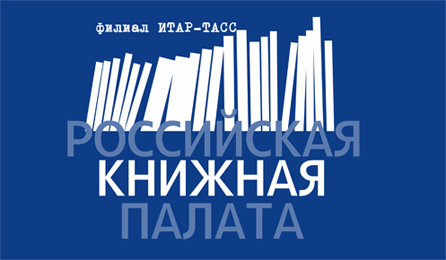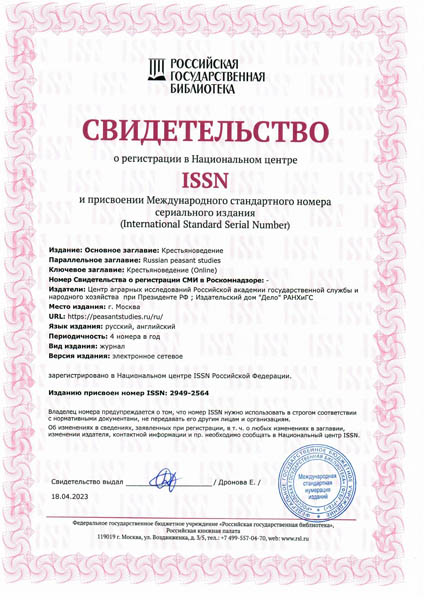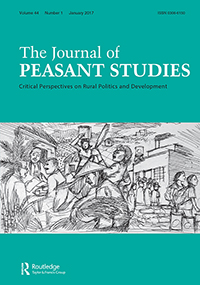Kuznetsov I.A. Stolypin agrarian reform and agricultural productivity of European Russia in the late 19th — early 20th century // The Russian Peasant Studies. 2021. V.6. №3. P. 42-78.
DOI: 10.22394/2500-1809-2021-6-3-42-78
Annotation
The author considers the links between measures of the Stolypin agrarian reform and indicators of the Russian agricultural development based on various statistical data: statistics of yields (Central Statistical Committee), statistics of grain prices and land management (Main Directorate of Land Management and Agriculture), data of the Ministry of Internal Affairs on peasant exits from the community, data from the survey of farms and allotments conducted by the GUZiZ in 1913. The author also uses data on the income from non-grain crops and animal husbandry, and on the cost of commercial outputs per unit of agricultural land on the eve of the First World War. Based on the analysis of statistics, the author refutes the idea that agriculture had passed the peak of progressive shifts before the reform and that the growth of agricultural production slowed down under the reform. The author reveals mistakes in the 1913 survey of yields, which makes its data invalid for studying the ratio of yields by farm type; uses the moving average method to smooth out annual fluctuations in the CSC statistics of yields; compares the indicators of the best five years before the reform with the indicators of the best five years of the reform to minimize the influence of weather fluctuations on the measurement of the grain production dynamics; calculates the shifts in yields of major crops; with the correlation analysis, identifies the relationship between shifts in yields and productivity for the selected periods under the Stolypin reform in 47 provinces of European Russia; studies the links of the reform with other indicators of the agrarian development; proves the significant positive links (mainly of medium strength and weak) between the peasant activity in the individualization of land tenure (exits from the community) and land use (farms on the allotments) under the reform, and the negative links between economic indicators and the development of group land management within the communal land tenure. Thus, the author insists that the previous historiographic statements about the absence of links between the reform and yields, and about the negative links between the registration of peasant land ownership and the increase in yields on allotments were not confirmed.
Keywords
Stolypin agrarian reform, agrarian history of Russia, agricultural statistics, productivity, land management, peasant community.
About the author
Kuznetsov Igor A., PhD (History), Senior Researcher, Russian Presidential Academy of National Economy and Public Administration. 119571 Moscow, Vernadskogo Prosp., 82.
E-mail: This email address is being protected from spambots. You need JavaScript enabled to view it.
























